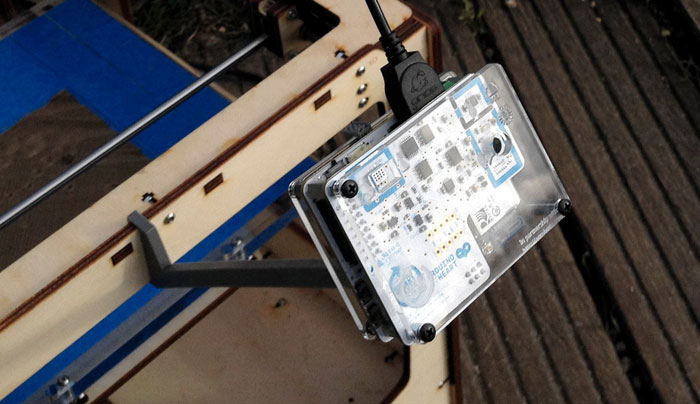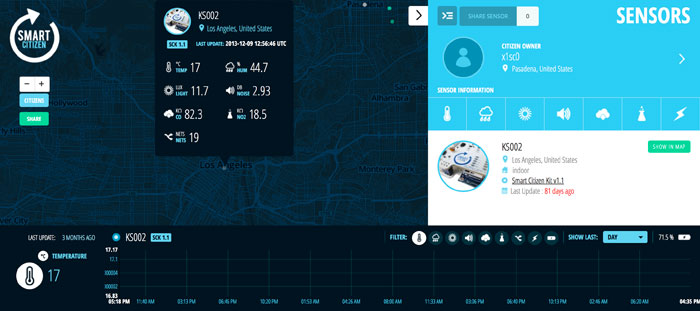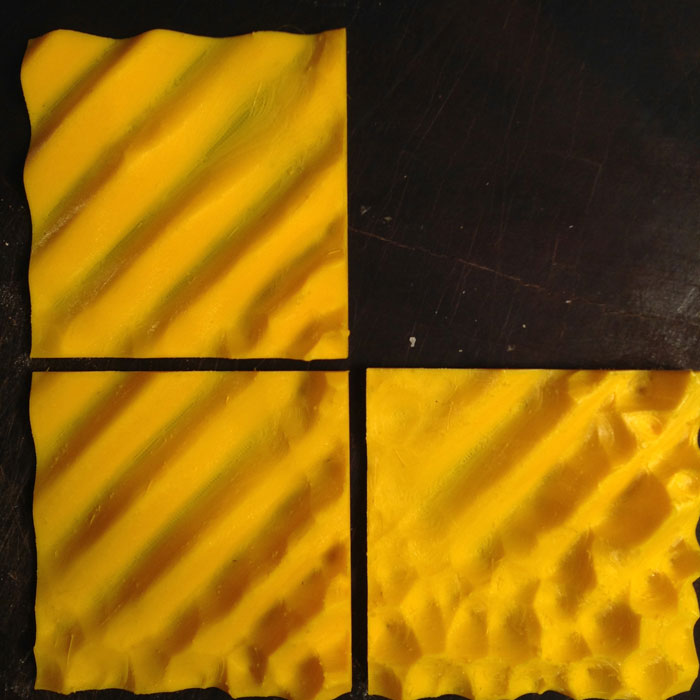When you hear the name “FABMOB”, what do you think of? If it’s a gang of fashionable Italian stereotypes, you’re in for a big disappointment. FABMOB stands for fabrication + mobility and it is meant to produce an ATMOStag (atmosphere + tag). Or, in language that doesn’t require plus signs, FABMOB is an atmospheric sensing device that 3D prints topographical representations of environmental data.
FABMOB is an Ultimaker strapped with a bunch of sensors that prints the data that it senses in the form of small, bumpy tiles called ATMOStags. The device was produced for Défi Data+, an international contest for functional prototypes related to digital manufacturing and the Internet of Things, and the production of “tangible representations of data.”
The 3D printer is outfitted with a Smart City microprocessor development board, an Arduino-based platform for registering sense data that was funded on Kickstarter last year. With the Smart City, the printer registers the following ambient information: time, location, ambient light, temperature, noise level, humidity, CO2 levels, and CO levels. The device then prints this data in 3D in the form of ATMOStag tiles.
The ATMOStags are then placed in the location in which they were generated. The tiles also feature engraved urls that can take a passerby to the Smart City database, which collects all of the atmospheric information captured by its Smart Citizens. The engineers of this open source project describe its purpose thusly:

FABMOB is a project addressing the cultures of creativity concerning fabrication, makers and hackers. It’s multiplicity of potential applications does not hide behind the myriad of nomenclatures construed to justify the surveillance society, the Smart City or the automation of the built environment.
FABMOB’s simple goal is the expression of contemporary culture — networked society — as a gesture through public design.
ATMOStag marks an instant, the passage of time, as an atmospheric quality.
ATMOStag is an expression of contemporary culture’s convergence between:
data + real experience,
technology + nature,
science + art,
virtual + physical — through the fabrication of a personal, physical artefact emanating from that culture.
ATMOStag is the new ornamentation for the spatial design of the contemporary city. Neither decorative nor superficial, but ornamentation that is the modulation of a surface in order to reveal its depth.
Perhaps more interesting than the FABMOB is the Smart City that runs it. The hardware has a variety of sensors that measure things like pollution in your environment, but the data is then uploaded to a web-based application that monitors all of the data across the world from people using the Smart City hardware. The idea is that a bunch of ordinary citizens can track the pollution in their environment and communicate it to one another. In an era in which citizens cannot trust governments to regulate corporations or corporations to regulate themselves, citizens will have to turn to their own solutions to the ongoing pollution of their own habitats. Combined with projects like the iPhone mercury detector developed out of UCLA, Smart City represents a grassroots effort to take responsibility for the pollutants in our environment.
The component added by FABMOB, buried beneath the language of artists, is that it could serve as a very interesting device for the blind. Though a 3D printer may not be the most practical way to execute this, it presents a prospect for the visually impaired to read information like the CO2 levels in their environment. I’m thinking something more along the lines of the Braille reader invented by a fifteen-year-old Angad Daryani, which used 3D printed parts to translate visual text into Braille for the blind. FABMOB is an interesting concept and, I think, with more development, I could see some pretty groovy (pun intended) uses coming out of it.
Source: FABMOB







